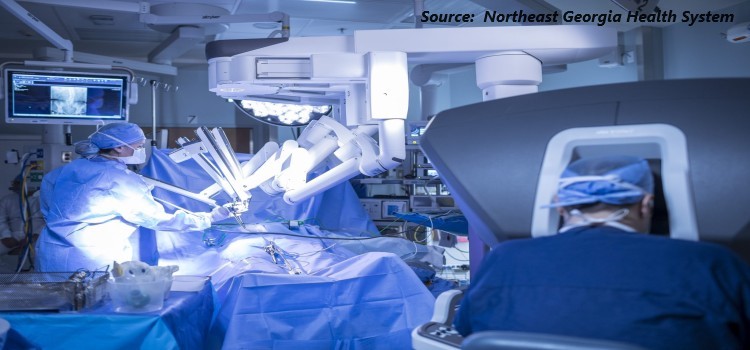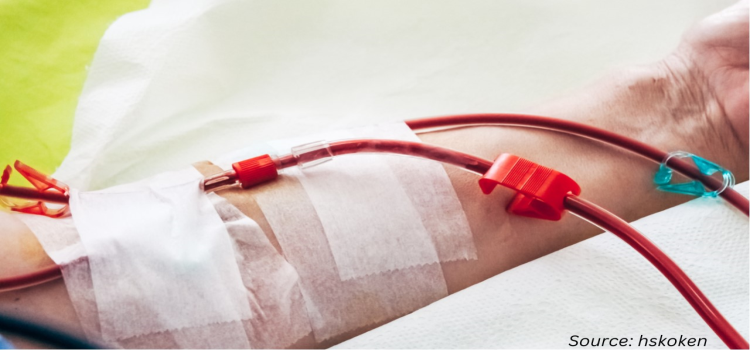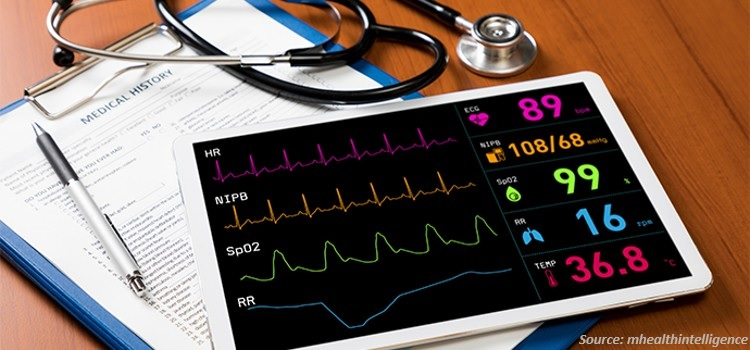
Europe Disabled & Elderly Assistive Device Market by Type (Living Aids, Hearing Aids, Mobility Aids, Medical Furniture, and Bathroom Safety Equipment), and by End User (Hospitals, Elderly Nursing Homes, Home Care, and Other End Users) – Opportunity Analysis and Industry Forecast, 2024–2030
Industry: Healthcare | Publish Date: 11-Dec-2023 | No of Pages: 190 | No. of Tables: 140 | No. of Figures: 85 | Format: PDF | Report Code : N/A
Market Definition
Europe Disabled & Elderly Assistive Device Market was valued at USD 10.54 billion in 2023, and is predicted to reach USD 15.03 billion by 2030, with a CAGR of 5.05% from 2024 to 2030. The assistive device industry empowers individuals with disabilities and older adults to live more independent and fulfilling lives by designing and manufacturing specialized tools and systems. This industry encompasses a wide range of devices and software solutions tailored to address physical, sensory, cognitive, and developmental limitations.
Operating at the convergence of healthcare, technology, and accessibility, it gives rise to innovative solutions such as mobility aids, communication devices, and home automation systems. Fueled by an aging population, rapid technological advancements, and evolving regulatory landscapes, the assistive device industry prioritizes inclusivity and continuously adapts to meet the ever-changing needs of its diverse user base.
Growing Government Support for The Aging Population Drives the Assistive Device Industry
European governments are placing a growing emphasis on providing comprehensive care and support for their aging citizens, including healthcare, accessibility, and quality of life. This has led to increased investment in the development and use of assistive technologies that specifically address the needs of older adults. Financial incentives, subsidies, and policy frameworks further encourage the production and distribution of these technologies.
This strong government support also fosters innovation in the industry and ensures that older Europeans have access to state-of-the-art solutions that enhance their independence and overall well-being. It acts as a catalyst, driving the disabled & elderly assistive device industry to meet the evolving needs of an aging European population.
The Rise of Customization And Personalization Creates Demand for Assistive Devices in Europe
In the European Disabled and Elderly Assistive Device Market, the surge in demand for customization and personalization underscores a shift toward addressing the unique and diverse needs of users. Acknowledging that disabilities and aging challenges vary widely across the continent, this trend advocates for assistive devices that can be adapted to specific requirements. Beyond functional considerations, customization ensures comfort and usability, with adjustable features enhancing the overall user experience. Personalized solutions not only improve compliance with prescribed routines but also integrate technology in a way that aligns with individual preferences.
High Cost and Affordability of Assistive Devices Hinders the Market Growth in Europe
In Europe, the financial burden of assistive technologies often renders them inaccessible to many individuals, particularly those in lower-income brackets. This lack of access poses a considerable obstacle for a substantial segment of the population, hindering their ability to reap the benefits of these transformative devices. Additionally, a pervasive lack of awareness regarding the availability and advantages of assistive technologies among individuals, caregivers, and even healthcare professionals contribute to their underutilization.
Integration of Future Technologies such as AI and ML for the Europe Assistive Device Industry
Assistive technology in Europe is undergoing a metamorphosis, becoming more customized, readily available, and productive than ever before. This revolution is largely driven by breakthroughs in artificial intelligence (AI) and machine learning (ML), which are enabling assistive devices to be meticulously tailored to individual requirements and adapt to evolving circumstances. The Internet of Things (IoT) and smart home systems are also empowering European users to take control of their environments with greater autonomy than previously possible.
Wearable gadgets and sensors are continuously monitoring health metrics, generating valuable insights for self-care and overall well-being. Robotics-powered mobility aids and exoskeletons are enhancing physical capabilities, while augmented reality (AR) and virtual reality (VR) technologies are transforming training and rehabilitation programs. These groundbreaking innovations are reshaping the European assistive technology landscape, broadening the range and effectiveness of solutions while making them more accessible to those in need.
Germany Holds the Dominant Market Share in European Market
The Disabled and Elderly Assistive Device Market in Germany is experiencing significant growth due to continuous technological advancements. Innovations such as smart home technologies, wearable devices, and robotics are transforming the landscape of assistive devices. Robotics, including exoskeletons and robotic arms, provide mobility assistance and support daily tasks for those with impairments. These technological breakthroughs not only improve the functionality of assistive devices but also foster independence and social integration, driving the market's continuous expansion.
The German government is actively supporting the well-being of its older citizens, recognizing the critical role of assistive devices in enhancing their independence and quality of life. This unwavering support is fueling innovation within the disabled and elderly assistive device industry, ensuring that German seniors have access to cutting-edge solutions tailored to their specific needs.
The U.K. to Witness Substantial Growth in the European Market
The UK's aging population is on the rise, driving the need for assistive technology solutions. As people age, they increasingly face challenges related to mobility and cognitive function. Assistive technologies play a crucial role in addressing these issues and enabling older adults to maintain their health and independence. These solutions also alleviate the burden on caregivers and provide cost-effective alternatives to institutional care.
In the UK's assistive technology sector, the rising demand for customized and personalized devices reflects a shift towards catering to the specific and diverse needs of users. Recognizing the wide spectrum of disabilities and ageing challenges, this trend promotes assistive devices that can be tailored to individual requirements. Beyond functional considerations, customization ensures comfort and usability, with adjustable features enhancing the overall user experience. Personalized solutions not only improve adherence to prescribed routines but also integrate technology seamlessly with individual preferences.
Competitive Landscape
Various market players operating in the Europe disabled & elderly assistive device market include Invacare Corporation, Sunrise Medical LLC, Bausch & Lomb, Inc., Permobil AB, Siemens Healthcare, Freedom Scientific, Inc., William Demant Holding A/S, Starkey Hearing Technologies, GN ReSound Group, Ai Squared, Blue Chip Medical Products, Inc., MED-EL, Liberator Ltd., Drive Medical Design and Manufacturing, Exact Dynamics B.V., and others.
Europe Disabled & Elderly Assistive Device Key Market Segments
By Type
-
Living Aids
-
Hearing Aids
-
Behind-the-ear Aids (BTE)
-
Receiver-in-the-Ear Aids (RITE)
-
In-the-Ear Aids (ITE)
-
Bone Anchored Hearing Aids (BAHA)
-
Canal Hearing Aids
-
Cochlear Implants
-
Reading and Vision Aids
-
Braille Translators
-
Video Magnifiers
-
Reading Machines
-
Others
-
-
Mobility Aids
-
Walkers & Rollators
-
Canes & Walking Sticks
-
Crutches
-
Transfer Lifts or Patient Mechanical Lift Handling
-
Door Openers
-
Others
-
-
Medical Furniture
-
Medical Beds
-
Door Openers
-
Medical Furniture Accessories
-
Riser Reclining Chairs
-
Others
-
-
Bathroom Safety Equipment
-
Shower Chairs
-
Commodes
-
Ostomy Products
-
Bars, Grips, & Rails
-
By End User
-
Hospitals
-
Elderly Nursing Homes
-
Home Care
-
Other End Users
By Region
-
Europe
-
France
-
Germany
-
Italy
-
Spain
-
UK
-
Rest of Europe
-
REPORT SCOPE AND SEGMENTATION:
|
Parameters |
Details |
|
Market Size in 2023 |
USD 10.54 Billion |
|
Revenue Forecast in 2030 |
USD 15.03 Billion |
|
Growth Rate |
CAGR of 5.05% from 2024 to 2030 |
|
Analysis Period |
2023–2030 |
|
Base Year Considered |
2023 |
|
Forecast Period |
2024–2030 |
|
Market Size Estimation |
Billion (USD) |
|
Growth Factors |
The emphasis on home-based care drives the market growth in Europe Government initiatives drives the growth of assistive device industry in Europe |
|
Countries Covered |
5 |
|
Companies Profiled |
15 |
|
Market Share |
Available for 10 companies |
|
Customization Scope |
Free customization (equivalent up to 80 working hours of analysts) after purchase. Addition or alteration to country, regional, and segment scope. |
|
Pricing and Purchase Options |
Avail customized purchase options to meet your exact research needs. |
KEY PLAYERS
-
Invacare Corporation
-
Sunrise Medical LLC
-
Bausch & Lomb, Inc.
-
Permobil AB
-
Siemens Healthcare
-
Freedom Scientific, Inc.
-
William Demant Holding A/S
-
Starkey Hearing Technologies
-
GN ReSound Group
-
Ai Squared
-
Blue Chip Medical Products, Inc.
-
MED-EL
-
Liberator Ltd.
-
Drive Medical Design and Manufacturing
-
Exact Dynamics B.V.




 Speak to Our Analyst
Speak to Our Analyst


































